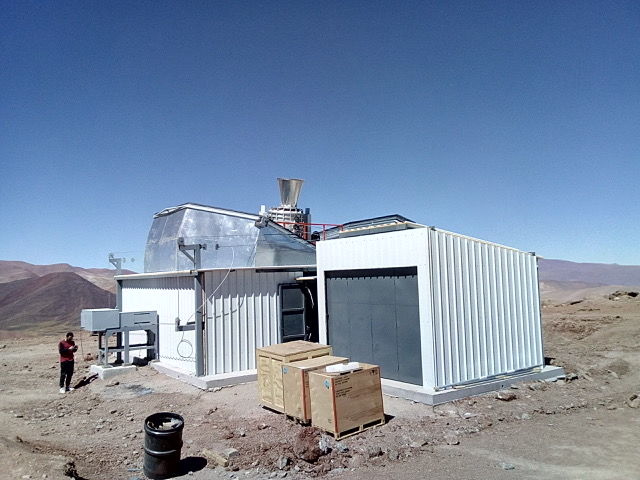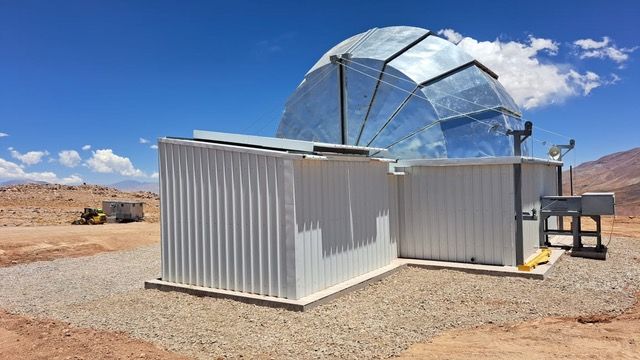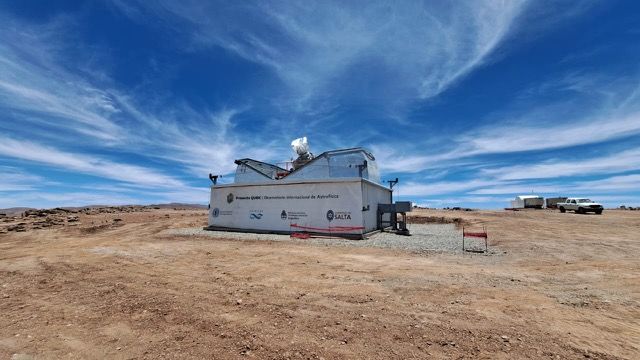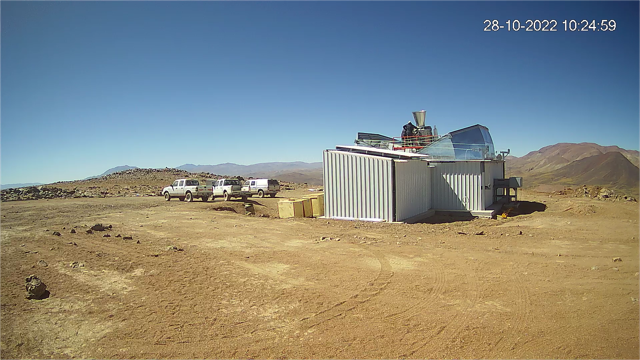
Qubic, a new way to study the primordial universe
Italy plays a leading role in the project thanks to the scientific and technological contributions provided by the INFN (National Institute for Nuclear Physics) and the Università Statale di Milano, University of Milan-Bicocca, University of Rome 'Tor Vergata' and Sapienza University of Rome.
QUBIC will focus on measuring the signal caused by the interaction of primordial gravitational waves with the electromagnetic radiation that permeates the universe. After its development and integration at the European laboratories of the universities and research institutions involved in the collaboration, QUBIC arrived in Argentina, in the city of Salta, in July 2021, where it was calibrated and tested in the laboratory.
The results of these activities are reported in eight articles that appeared in the 'Journal of Cosmology and Astroparticle Physics' in April of this year and confirmed the proper functioning of the instrument and bolometric interferometry, i.e. the newly developed technique on which QUBIC's observations will be based, which combines the very high sensitivity of bolometric detectors cooled to near absolute zero (-273 °C) with the precision of interferometric instruments.
The objective of observing the very light polarisation effects in the microwaves that originated in the very early stages of the expansion of the universe after the Big Bang, i.e. the direction in which the associated electromagnetic field oscillates as it propagates, made it necessary to develop and build a complex and unique instrument. Today, QUBIC represents a unique resource in the global panorama of measurements on the early universe.
"There is no other way to investigate experimentally with ground-based experiments those phenomena that are thought to have occurred during the so-called 'cosmic inflation', when the energy involved was frighteningly large. QUBIC is therefore important for both cosmology and fundamental physics," says Silvia Masi, professor at Sapienza University of Rome and INFN researcher coordinating the Italian participation in the experiment.
"QUBIC," adds Oliviero Cremonesi, president of the INFN's National Scientific Commission for Astroparticle Physics Research, "aims to measure the polarisation of the cosmic microwave background with a unique possibility of detecting the marks left by gravitational waves released in the first moments of the universe's life". The effectiveness of QUBIC and the measurement method used to study the primordial universe were verified by the collaboration during the long period between the first tests conducted in the laboratory in Paris, and the arrival of the instrument in Argentina, at the laboratory in Salta, where the first observations of the sky were made. The experiment installation in San Antonio de Los Cobres in October thus marks a success that comes at the end of a long preparation period. It will allow ultra-sensitive measurements to begin, thanks to the extraordinary transparency and stability of the observation site's atmosphere.
"The QUBIC installation team, in which Francesco Cavaliere, laboratory manager at the Università Statale di Milano, also participated, did an excellent job in a very short time, under particularly challenging conditions due to the altitude and strong winds at high altitude. The first measurements will demonstrate 'in the field' the effectiveness of bolometric interferometry by observing astronomical sources. In approximately one year, the instrument will also be made even more competitive by increasing the number of antennas and detectors so that measurements of cosmological interest can be carried out within three years", explains Aniello Mennella, lecturer at the Università Statale di Milano and INFN researcher.
"The measurement of such a weak signal," specifies Mario Zannoni, lecturer at the University of Milano-Bicocca and INFN researcher, "will only be considered free of systematic errors if there are consistent results from very different instruments. It is precisely for this reason that QUBIC, the only bolometric interferometer, represents an irreplaceable resource in studying the early life of the universe".
"Thanks to its multispectral and self-calibration capabilities, QUBIC will produce data that are completely original and complementary to those of the other experiments, offering researchers countless possibilities for cross-checking and thus unparalleled robustness of results", concludes Giancarlo De Gasperis, a researcher at the Department of Physics, University of Rome 'Tor Vergata' and INFN.
QUBIC is the result of the collaboration of 130 researchers, engineers and technicians in France, Italy, Argentina, Ireland and the UK. The instrument was assembled in Paris at the APC laboratories in 2018 and calibrated during 2019-2021. The Italian contribution was fundamental to the development of the instrument and will continue to be so in the subsequent phases of the experiment. The instrument is housed in a cryostat, built in the laboratories of Sapienza and the Rome section of the INFN, capable of cooling not only the detectors but also the interferometer's entire optical system to near absolute zero. The same group also built the cryo-mechanical system that allows the polarisation state of the radiation to be measured. Other cryogenic components, which work at a temperature below -270 °C, are also Italian, such as the highly advanced corrugated antennas that collect radiation from the sky, made in the laboratories of the University and INFN Section of Milano Statale, whereas the optics that focus it on the detectors and the system of shutters that allows the interferometer's configuration to be varied and self-calibrated are made by the University and INFN Section of Milano Bicocca.
"The start of QUBIC data collection is a tangible sign of INFN's interest in cosmic background radiation research and was also made possible thanks to a significant INFN contribution", concludes Marco Pallavicini, member of the INFN Executive Board.
References
QUBIC webpage: http://qubic.in2p3.fr/wordpress/
JCAP special issue (Journal of Cosmology and Astroparticle Physics): https://iopscience.iop.org/journal/1475-7516/page/Special%20Issues
Video https://f.io/G-WVKNbU - credits: Comisión Nacional de Energía Atómica (CNEA)
Further Information
Silvia Masi
Department of Physics







